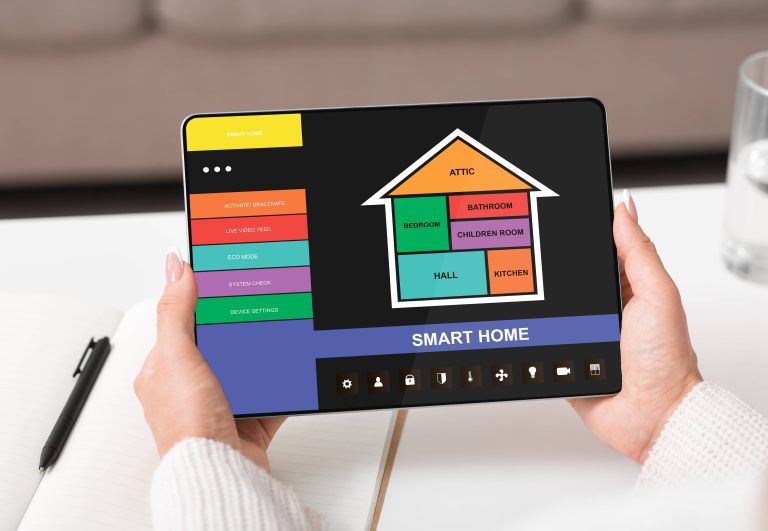
Science fiction often tantalizes us with futuristic visions of homes that think, react, and cater to our every whim without requiring a single command from us. Imagine a living space so intuitive, anticipatory, and intelligent that it takes care of all your needs before you even realize them. The question that arises is: Can smart homes actually think for themselves in the future? With the rapid evolution of artificial intelligence (AI), the Internet of Things (IoT), and machine learning, we are closer to this reality than ever before. Let’s explore the possibility of smart homes thinking for themselves in the future.
The Current Landscape of Smart Homes
As of today, smart homes have made impressive strides. Our homes are equipped with an array of smart devices like voice assistants (Amazon Alexa, Google Home), smart thermostats (Nest, Ecobee), smart lights (Philips Hue), and security systems (Ring, SimpliSafe). These gadgets are interconnected and can be controlled remotely through our smartphones or by voice commands.
However, the current level of smart home technology requires active participation from users. Even with automation routines set up, such as turning off lights at midnight or adjusting the thermostat when no one is home, these actions are pre-programmed and lack true autonomous thinking. Essentially, our smart homes follow directives, offering convenience but not genuine intelligence.
Pioneering Technologies Driving Autonomous Thinking
For smart homes to think for themselves, they would need to harness a synergy of advanced technologies. This includes:
1. Artificial Intelligence (AI): AI, particularly deep learning, can analyze vast amounts of data to recognize patterns, make decisions, and learn from experiences. AI has the potential to develop cognitive capabilities analogous to human thinking.
2. Internet of Things (IoT): IoT connects various devices and sensors within a smart home ecosystem, enabling real-time data exchange. The integration of IoT is crucial for creating a cohesive environment that responds dynamically to the changing state of the home.
3. Machine Learning: Machine learning algorithms allow systems to learn and improve autonomously based on data inputs. This is crucial for developing homes that adapt to the preferences and habits of their inhabitants over time.
4. Edge Computing: Instead of relying solely on cloud-based servers, edge computing processes data locally on devices within the home. This reduces latency and enhances responsiveness, making real-time decision-making possible.
Characteristics of Autonomous Smart Homes
A truly autonomous smart home would exhibit certain definitive characteristics:
– Proactive Adaptation: Rather than waiting for user commands, the home anticipates and responds to the needs of its occupants. For example, if the house “senses” you’re feeling cold through a combination of ambient temperature, your typical comfort preferences, and your current attire, it might adjust the thermostat or suggest a warm drink automatically.
– Integrated Learning: Autonomous homes continuously learn from user habits. They become progressively better at predicting when to perform certain tasks. For instance, the home could learn your morning routine and ensure that the water heater, coffee maker, and kitchen lights are synced to be ready for your precise schedule.
– Contextual Awareness: The home understands the context of activities. If you’re watching a movie, it dims the lights, closes the curtains, and optimizes audio settings for a perfect viewing experience, without needing specific instructions.
– Enhanced Security: By continuously monitoring patterns and identifying anomalies, an autonomous smart home can better protect against potential threats. It could identify a potential burglary from irregular movement patterns or recognize potential hazards like a stove left on accidentally.
Challenges and Ethical Considerations
While the vision of fully autonomous smart homes is enticing, there are significant challenges and ethical considerations that need to be addressed:
– Privacy: An autonomous home would require continuous data collection to learn and adapt. Ensuring this data is protected and used ethically is paramount to prevent breaches of privacy.
– Dependence on Technology: There’s a risk of becoming overly dependent on such smart systems. What happens if there’s a system failure or a cyber-attack? Ensuring robust, fail-safe mechanisms is crucial.
– Ethical AI: Autonomous systems must be programmed with ethical guidelines to ensure fairness, transparency, and non-bias in decision-making processes. Decisions made by AI should be aligned with the best interests of the occupants.
– Interoperability: For a seamless autonomous home, devices from different manufacturers need to work flawlessly together. Standardization and compatibility are essential for the smooth operation of an interconnected smart home environment.
Concluding Thoughts
The journey towards autonomous smart homes thinking for themselves is exciting and fraught with both opportunities and challenges. The combined power of AI, IoT, machine learning, and edge computing is gradually transforming our living spaces into intelligent ecosystems that not only enhance comfort and convenience but also ensure security and efficient energy use.
While the vision of homes that think autonomously is still in its nascent stages, the pace of technological advancement suggests that it might not be long before such intelligent abodes become a common reality. As we continue to innovate and develop, it is essential to approach these advancements with mindfulness towards ethical considerations, ensuring that our living spaces enhance our lives in the most beneficial and secure ways possible.
The future of smart homes is bright, and the day when our homes think for themselves might just be around the corner. So, stay tuned and prepare to embrace a new era of living where your home truly knows and cares for you.







